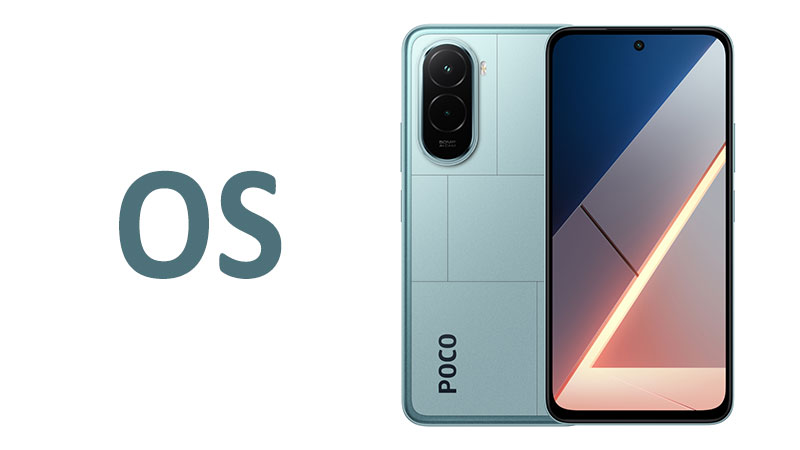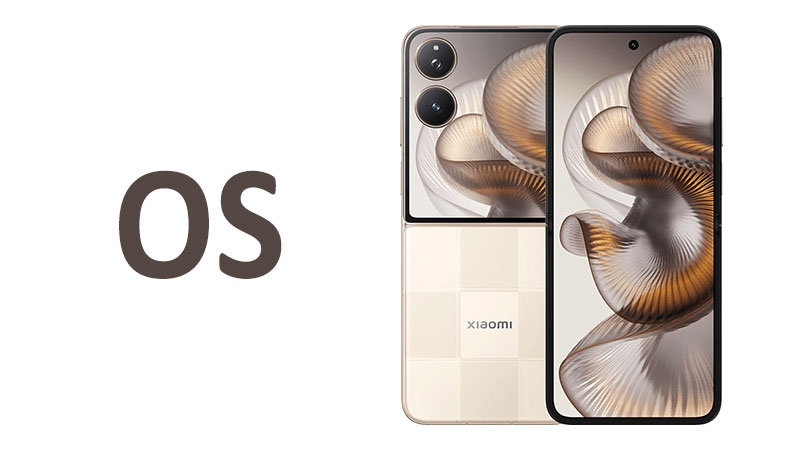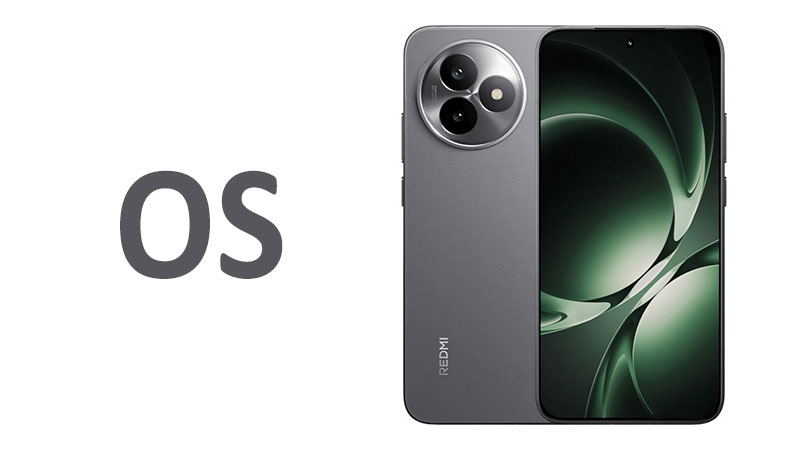The modern smartphone experience is defined not just by its hardware, but by its software. For users of the newly launched Xiaomi Poco M7 Plus, the operating system (OS) is a key factor in performance, features, and longevity. This phone introduces a powerful combination: Android 15 at its core, seamlessly integrated with Xiaomi’s custom-built HyperOS 2 user interface. This article provides a comprehensive look at this software duo, exploring its features, benefits, and what it means for the end-user. We’ll delve into the intricacies of this new OS, helping you understand why it’s a crucial selling point for the Poco M7 Plus.
The Foundation: Android 15
Android 15 is the latest version of Google’s mobile operating system, bringing with it a host of improvements focused on privacy, performance, and user-centric features. The Poco M7 Plus is one of the first devices in its segment to ship with this software right out of the box, ensuring it has all the latest advancements from Google.
Android 15 introduces enhanced privacy controls, giving users more granular control over app permissions. A notable feature is the improved “Private Space,” which allows users to create a secure, password-protected area on their device for sensitive apps and data. This is a major security boost. The OS also brings a revamped credential manager, simplifying the process of signing into apps and services with passkeys.
Performance is a key theme of Android 15. The OS is designed to be more efficient, leading to faster app launch times and smoother multitasking. It also includes new APIs for developers, allowing them to create more advanced, AI-powered applications. For the Poco M7 Plus, which is powered by the Snapdragon 6s Gen 3 chipset, this translates to a highly responsive and fluid user experience.
Another significant improvement in Android 15 is the emphasis on health and well-being. It includes new APIs for fitness trackers and health apps, making it easier to sync data and gain insights into your physical activity. The OS also has a redesigned “Notifications” panel, which groups alerts more intelligently to reduce distraction and combat notification fatigue.
Android 15 also improves the visual experience. The updated Material You design language offers even more customization options, allowing you to tailor the look and feel of your phone to your personal style. It’s a small but impactful detail that makes the user interface feel truly personal.
The User Interface: HyperOS 2
While Android 15 provides the core functionality, HyperOS 2 is the face of the Poco M7 Plus. It’s Xiaomi’s custom user interface, a successor to the well-known MIUI. HyperOS 2 isn’t just a simple skin; it’s a deeply integrated system designed to unify Xiaomi’s vast ecosystem of devices.
HyperOS 2 is built around a new “HyperCore” architecture. This proprietary kernel aims to push the boundaries of performance and efficiency. It optimizes memory management and reduces CPU idle time, resulting in a more responsive and energy-efficient experience. For the Poco M7 Plus, this means the large 7,000mAh battery can last even longer, as the OS is better at managing power consumption.
The user interface of HyperOS 2 is clean and modern, with smooth animations and a focus on visual appeal. It includes a revamped control center and notification shade that are both more intuitive and aesthetically pleasing. The UI’s design is consistent across the system, making navigation feel natural. It also offers extensive customization options, from dynamic wallpapers to a more refined icon pack.
A standout feature of HyperOS 2 is its deep integration with Google Gemini, Google’s powerful AI assistant. The OS includes an “AI Assistant” that can transcribe recordings, summarize meetings, and offer real-time recommendations. This is a game-changer for productivity, allowing users to leverage AI for everyday tasks. HyperOS 2 also introduces “AI Art” and “AI Expand Photo,” which give users new creative tools for photo editing. This makes the Poco M7 Plus not just a communication device, but a powerful creative tool.
HyperOS 2 also enhances cross-device connectivity through “HyperConnect.” This feature allows for seamless communication and data transfer between the Poco M7 Plus and other Xiaomi devices, such as tablets, smartwatches, and laptops. Users can easily share files, mirror their screen, or even use their phone’s camera as a webcam for their tablet. It’s a compelling feature that rivals similar ecosystems from Apple and Samsung.
Poco M7 Plus OS: Comparison and Analysis
When comparing the Poco M7 Plus OS to its predecessors and competitors, several key points emerge.
Poco M7 Plus OS vs. Previous Models (e.g., M6 Pro):
The move from MIUI to HyperOS is a major step forward. While MIUI was functional, it was often criticized for being resource-intensive and having intrusive ads. HyperOS 2 is a significant refinement, offering a lighter, faster, and more streamlined experience. The combination with Android 15 also means the Poco M7 Plus benefits from the latest security patches and performance boosts that older models won’t receive.
Poco M7 Plus OS vs. Competitors (e.g., devices with One UI or OxygenOS):
The Poco M7 Plus OS is highly competitive. HyperOS 2 offers a different philosophy than other Android skins. Samsung’s One UI is known for its extensive features and deep customization, while OnePlus’s OxygenOS focuses on a near-stock Android experience with a few thoughtful additions. HyperOS 2, however, strikes a balance between functionality and a polished user interface. Its deep integration with Xiaomi’s ecosystem and powerful AI features, including Gemini, give it a unique edge, especially for users who already own other Xiaomi devices.
The promised software support is also a significant selling point. With two major Android upgrades and four years of security updates, the Poco M7 Plus will remain current and secure for a long time. This gives it an advantage over many other mid-range phones that only offer one or two years of updates.
Pros of the Poco M7 Plus OS:
- Latest Android Version: Ships with Android 15, ensuring access to the newest features and security.
- Performance Optimization: HyperOS 2’s HyperCore architecture provides a fast and fluid user experience.
- Advanced AI Features: Integration with Google Gemini and other AI tools enhances productivity and creativity.
- Ecosystem Integration: HyperConnect simplifies the use of multiple Xiaomi devices.
- Excellent Software Support: Two major OS upgrades and four years of security patches guarantee longevity.
- Intuitive UI: The clean and modern design of HyperOS 2 is a major improvement over previous interfaces.
- Security: Enhanced security and privacy features from both Android 15 and HyperOS 2.
Cons of the Poco M7 Plus OS:
- Learning Curve: Users coming from a different Android skin may need some time to get used to HyperOS 2.
- Pre-installed Apps: Like many other Android phones, the Poco M7 Plus may come with some pre-installed bloatware.
- Updates: While the update promise is good, the speed of rollout may vary by region and carrier.
Important Points for Buyers
When considering the Poco M7 Plus, the OS is a crucial part of the purchasing decision. A buyer should know that this phone offers a fantastic blend of Google’s latest innovations and Xiaomi’s custom features. The device’s performance is not just a result of its processor but is also a direct reflection of the streamlined and efficient HyperOS 2.
The promised software support is perhaps the most important point. It means the phone will receive future upgrades to Android 16 and Android 17. This ensures the phone will stay relevant and secure for a long time, increasing its resale value and overall lifespan.
The integration of AI features is another aspect to consider. For a phone in this price range, having a built-in AI assistant like Google Gemini is a significant value-add. It makes daily tasks, from writing emails to editing photos, much easier and more efficient.
Conclusion: The Smart Choice for Software-Conscious Users
The Xiaomi Poco M7 Plus is more than just a phone with a large battery and a fast display. Its real power lies in its software. The combination of Android 15 and HyperOS 2 offers a sophisticated, responsive, and secure experience that sets it apart from the competition. From the refined user interface to the deep AI integration and cross-device connectivity, every aspect of the OS is designed to enhance the user’s daily life.
For anyone looking for a mid-range phone that feels like a flagship, the Poco M7 Plus is a compelling choice. Its robust software package ensures that it is not just a device for today, but a reliable companion for years to come. The promise of future updates and the focus on performance make the Poco M7 Plus OS a true highlight.
FAQ
Yes, the Poco M7 Plus is promised to receive up to two major Android OS upgrades, which means it should get Android 16 and Android 17.
HyperOS is a lighter, more streamlined, and more deeply integrated operating system compared to the older MIUI. It focuses on performance, efficiency, and a unified experience across Xiaomi’s ecosystem.
Yes, despite running on HyperOS, the Poco M7 Plus is based on Android and has full access to all Google services, including the Google Play Store and all of Google’s native apps.
HyperOS 2 integrates with Google Gemini and other AI tools to provide features like real-time audio transcription, text summarization, and advanced photo editing tools.
Yes, the phone ships with the latest security features from Android 15 and is promised to receive four years of security patches, ensuring your data is well-protected.



